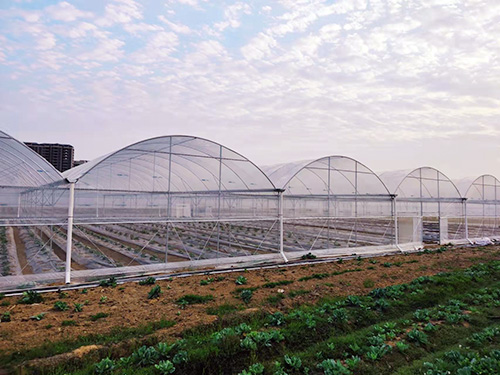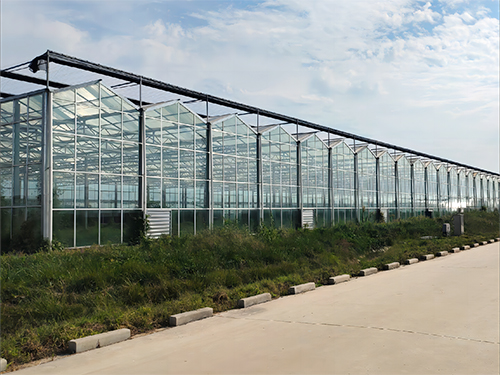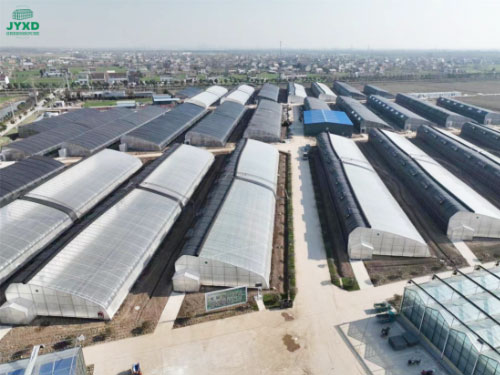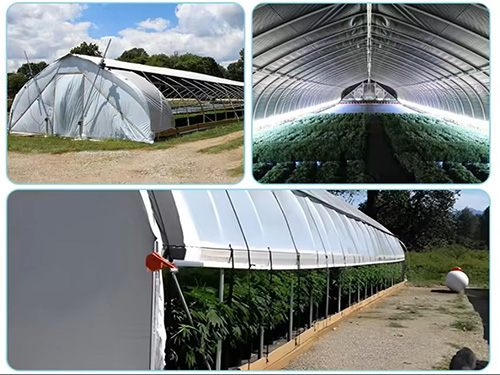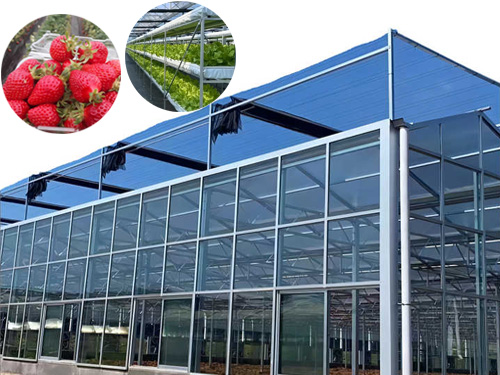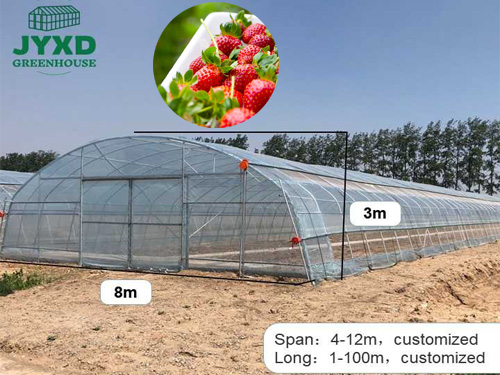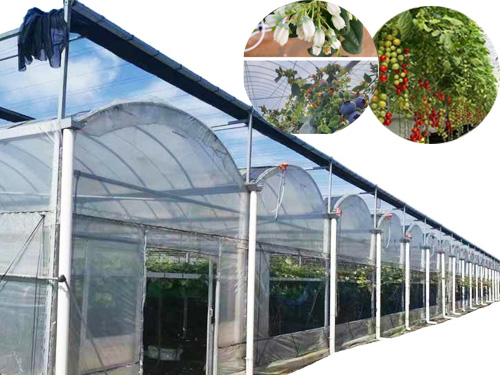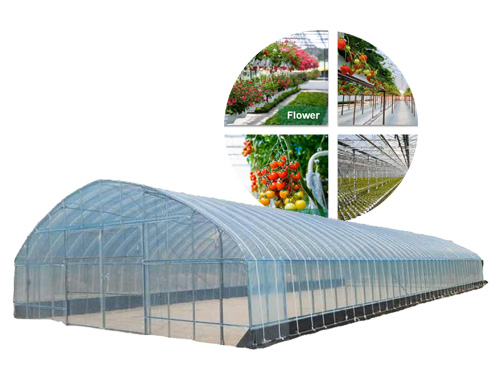NEWS DETAILS
NEWS INFORMATION
Energy-saving Technologies for Greenhouse Cultivation: Effective Strategies to Reduce Energy Consumption
AUTHOR:jyxd-greenhouse DATE:2024-11-26 22:31:42 HITS:181
With the global focus on sustainable agriculture rising, the greenhouse cultivation industry is seeking innovative energy-saving technologies to reduce energy consumption and improve efficiency. Greenhouse operations, which require heating, cooling, lighting, and water management systems, are often energy-intensive. By implementing appropriate energy-saving technologies, greenhouse cultivation can not only save costs but also significantly reduce its carbon footprint. This article explores several energy-saving technologies in greenhouse cultivation, offering practical strategies for growers.
1. Why Are Energy-saving Technologies for Greenhouses Crucial?
Greenhouse cultivation is an efficient agricultural method that provides a relatively stable environment for growing vegetables, fruits, flowers, and more. However, greenhouse operations require substantial energy to maintain suitable temperature, humidity, and lighting conditions, especially in cold or extreme climates. Adopting energy-saving technologies can lower operating costs and minimize environmental impact, making greenhouse cultivation more sustainable.
Keywords: Greenhouse Cultivation, Energy-saving Technologies, Sustainable Agriculture
2. Energy-saving Technologies for Greenhouse Temperature Control
Temperature control is at the core of energy efficiency in greenhouses, especially in winter when heating demands are high. The following technologies can significantly reduce heating energy consumption.
a) Double-layer Insulating Materials
Double-layer greenhouse materials (such as double-layer plastic films or double-glazed glass) can effectively improve the insulation performance of the greenhouse, reducing heat loss during the night.
Double-layer Film Structure: The outer layer protects the greenhouse from wind and cold, while the inner layer maintains the temperature inside, suitable for most greenhouse applications.
Low-energy Glass: Utilizing low-radiation glass to reduce heat loss, especially suitable for greenhouses with higher temperature demands.
b) Geothermal Heating Systems
Geothermal heating systems use the stable underground temperature to heat the greenhouse, reducing reliance on traditional heating energy sources. Geothermal energy is a clean, renewable energy ideal for greenhouses in colder regions.
Heat Pump System: Using ground-source heat pumps to bring underground heat into the greenhouse, heating the air and improving soil temperature, which helps plant roots stay healthy.
c) Night Insulation Curtains
The majority of heat loss in greenhouses occurs at night. Using insulation curtains can effectively reduce heat loss and increase the nighttime temperature of the greenhouse.
Automated Curtain System: Curtains can be rolled up during the day to let sunlight in and rolled down at night to improve the greenhouse’s insulation, achieving energy savings throughout the day.
Keywords: Greenhouse Temperature Control, Double-layer Insulation, Geothermal Heating
3. Solar Power Generation Systems
Solar power generation is one of the most important energy-saving technologies for greenhouses. By installing solar panels, a greenhouse can use clean solar energy to power internal equipment, reducing reliance on conventional electricity.
a) Solar Photovoltaic Systems
Installing solar photovoltaic panels on greenhouse roofs or surrounding areas can provide power for heating, lighting, and ventilation systems.
Roof-mounted Photovoltaics: Installing panels directly on the greenhouse roof maximizes the use of rooftop space while minimizing land usage.
Energy Storage Devices: Paired with batteries, excess power generated during the day can be stored and used during the night or on cloudy days.
b) Solar Water Heating Systems
Solar water heating systems can heat water for greenhouse use, providing warm water for irrigation or humidity regulation, which effectively reduces heating costs.
Collector Tube System: Solar collectors convert sunlight into hot water, meeting the greenhouse's water needs, especially in areas where water is scarce.
Keywords: Solar Power Generation, Photovoltaic Systems, Solar Water Heating
4. LED Supplemental Lighting Technology: Efficient Light Sources
Light is critical for plant growth in greenhouses, and traditional lighting systems are often inefficient and energy-consuming. LED supplemental lighting is an energy-efficient and effective alternative that provides the required spectrum for plant growth while reducing energy consumption.
a) Red-Blue LED Lights
Red-blue LED lights are specially designed for plant growth and provide the light spectrum necessary for photosynthesis, enhancing light utilization efficiency.
Red-Blue Light Combination: Different light wavelengths promote healthy leaf and stem growth, making them ideal for fruit and vegetable plants.
Adjusting Light Cycles: LED lights can be adjusted to match the plant's light cycle needs, ensuring maximum light utilization.
b) LED Automatic Adjustment Systems
Intelligent control systems can automatically adjust the brightness and on/off times of LED lights based on the greenhouse's light conditions, ensuring plants receive adequate light during cloudy days or at night.
Sensor Control: Using light sensors to monitor ambient light intensity, the system adjusts the LED light status accordingly.
Timer Management: Set the supplemental lighting time according to the plant’s needs to minimize unnecessary lighting.
Keywords: LED Supplemental Lighting, Red-Blue LED, Intelligent Lighting Control
5. Ventilation and Humidity Control Energy-saving Technologies
Ventilation and humidity control are vital components of greenhouse energy efficiency. Through proper ventilation design and humidity regulation, energy consumption can be reduced, and plant health can be improved.
a) Natural Ventilation Design
By properly placing ventilation openings, a greenhouse can achieve natural ventilation without electricity, lowering the temperature and expelling excess humidity.
Side Windows and Roof Vents: Side windows and roof vents allow natural airflow to circulate inside the greenhouse.
Ventilation Timing Control: Close ventilation openings when temperatures are low or not suitable for ventilation to prevent cold air from entering.
b) Wet Curtain Fan Systems
Wet curtain fan systems are an energy-efficient cooling method that can effectively control both humidity and temperature in greenhouses, particularly in hot weather or summer.
Wet Curtain Cooling: Using the evaporation of water curtains to reduce temperature while increasing humidity, reducing the energy consumption of cooling equipment.
Fan-assisted Circulation: Fans circulate the cooled air from the wet curtains throughout the greenhouse, enhancing the cooling effect.
Keywords: Greenhouse Ventilation, Natural Ventilation, Wet Curtain Fan
6. Water Resource Energy-saving Technologies for Greenhouses
Water resource management is also an essential part of greenhouse energy-saving. By adopting water-saving technologies, water waste can be reduced, and the energy consumption of water treatment and heating can be lowered.
a) Water Recirculation Systems
Water recirculation systems can recycle excess irrigation water in the greenhouse, achieving resource reuse.
Condensation Water Recovery: Installing condensation equipment in the greenhouse to collect moisture from the air for irrigation, reducing water consumption.
Multiple Cycle Irrigation: Purifying and reusing water that has not been absorbed by plant roots, reducing the need for fresh water.
b) Water and Fertilizer Integration Systems
Water and fertilizer integration technologies mix water and fertilizer and precisely control the irrigation volume, improving water absorption efficiency and reducing resource waste.
Drip Irrigation Systems: Drip irrigation delivers water and fertilizer directly to plant roots, reducing evaporation and water loss.
Automated Control: Adjust irrigation frequency and volume automatically based on soil moisture and plant requirements to avoid over-irrigation.
Keywords: Greenhouse Water Recirculation, Water-saving Irrigation, Water-Fertilizer Integration
7. Intelligent Management Technologies
With the development of smart agriculture, greenhouse energy-saving management is moving toward automation and intelligence. By monitoring and adjusting greenhouse parameters using IoT technologies, precise and efficient energy-saving management can be achieved.
a) Environmental Sensor Monitoring Systems
Key indicators like temperature, humidity, light, and carbon dioxide levels in the greenhouse can be monitored in real-time using sensors. The system automatically adjusts based on set parameters.
Automated Data Analysis: Big data is used to analyze changes in the greenhouse environment, predict and optimize equipment operations to achieve optimal energy savings.
Remote Control: Growers can remotely monitor greenhouse conditions via mobile phones or computers, adjusting temperature, humidity, and other parameters.
b) Greenhouse Automation Control Systems
Automation control systems can manage ventilation, irrigation, heating, lighting, and more in the greenhouse, providing comprehensive smart energy-saving management.
Intelligent Operations: Automated systems adjust based on environmental changes, eliminating the need for manual intervention, saving labor and energy.
Energy Monitoring and Management: By monitoring energy consumption, energy-intensive areas can be identified, and energy distribution within the greenhouse can be optimized.
Keywords: Smart Greenhouses, Environmental Sensors, Automated Control
Conclusion
The application of energy-saving technologies in greenhouses not only reduces operational costs but also enhances the environmental benefits of greenhouse cultivation. As technology continues to advance, greenhouse energy-saving technologies will become increasingly intelligent and precise, injecting green power into agricultural development. By properly applying these energy-saving strategies, greenhouse growers can achieve higher energy efficiency and economic returns.
Hebei Juyou Xinda Greenhouse Facilities Co.,Ltd.
Copyright © 2024-2025 https://www.jyxd-greenhouse.com. All Rights Reserved Hebei Juyou Xinda Greenhouse Facilities Co.,Ltd.Copyright





 Current Location:
Current Location: